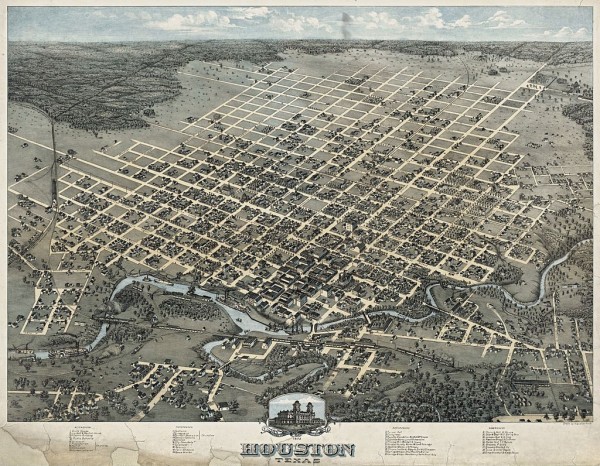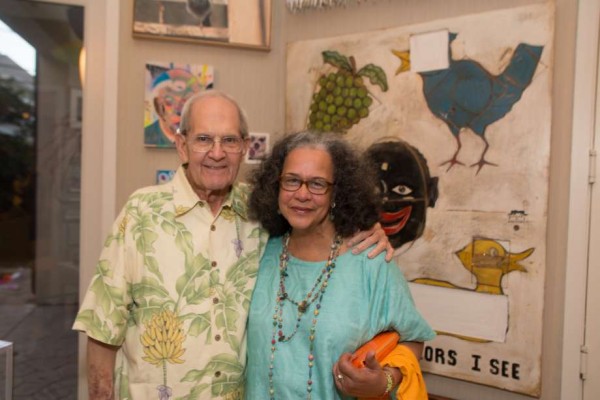I went to curator Clint Willour’s final exhibition at the Galveston Arts Center two nights ago. Clint has been the curator there for 25 years and there’s no one more deeply embedded in the Houston art world than he is. He’s curated around 400 shows and given exhibition opportunities to hundreds, if not thousands, of artists. If you’re an artist who’s been included in one of Clint’s shows you should feel pretty good because he doesn’t suffer idiots or bad art.
Clint’s retirement got me thinking about what a real “art world” really is. We all use the term casually but it means different things to different people. Usually it’s used to represent whatever art world we envy, hate or otherwise don’t belong to. Often it stands in for the worst parts of the art market, the speculative financial frenzy that now feeds markets of all kinds. Other people call it the “art community.” But that term tends to be a political reaction to the greed and mindlessness associated with the “art world” market. It implies a local perspective, but often results in uncritical celebration of local art, or fawns over the international style of exotic biennales.
Real art worlds evolve over time, in a region. They respond to the world through the filter of place. Local economies, politics, and even the landscape shape their realities. But you can’t artificially build a culture. Hand wringing over status in relation to New York or LA is more or less useless. The real story of a place grows slowly and steadily while condos rise and fall around it. Exhibitions, scandals, gossip, prodigal sons and daughters, deaths, local bars, restaurants and infamous parties live on in the cultural memory of a place even when the industries that support it thrive, waver and sometimes collapse. If you want a different scene, you’ll have to move. But wherever you go, you’ll be in another locality.
The making, buying and selling of art as an elite form of social engagement built in the name of cultural ideas and beauty is most tangible at the local level, where the players know each other. To me, it’s the Modernist ideal. Of course not all local art is good. Like most supposedly “international” art, much of it is bad. But in the local culture the primary currency isn’t money or fame. It’s integrity. Building a career, exhibiting, dealing and collecting locally means everyone experiences the rise and fall of professional and economic fortunes together. Money comes, money goes, but there’s always a little money left for art because although art is useless, it’s essential.
Integrity is complicated. It doesn’t do to think of it in highly moralistic terms. People in the art world on both sides of the financial exchange tend to be crazier and more in thrall to their passions and desires than most. There’s no product more useless, no asset more intangible and no career more unstable than those produced in the name of art. On the artist end of the deal integrity mostly has to do with sustaining a rich, rigorous practice over time.Integrity on the dealer end means paying artists and educating clients. This means dealers need to know something about art. A former career as a DJ won’t necessarily cut it.
Real collectors never stop buying art. They may scale back or slow down, but a decline in the market can’t stop a good collector’s acquisitive addiction. You need your fix in good times and bad. Good collectors aren’t necessarily wealthy either. Collectors buy at their scale. Good collectors, like good artists, understand that art is the final narrative of history. There’s a bit of the gambler in the dealer, the artist and the collector. No one can predict the future. At the heart of the exchange is the belief that they all share a perspective on art’s history that confirms their visions of its future. Because art history and history itself are not clearly divided these shared perspectives extend to a vision of human life in general.
The traditional Modernist gallery structure, one that’s built on trust cultivated through relationships mediated by the pleasures of art, might be the purest form of economic exchange we can hope for. The internet and online research can help in a purely practical sense (like the phone or the fax), but buying and selling art with people you don’t know over an Instagram post only promotes the exchange of questionable art between questionable people with questionable motives. In the very long run, nobody wins in that art world. You gotta see the work. You gotta talk to the people.
If you’re an artist in it for the long haul in your city, the only thing you must do is keep working. That motivation will shape everything else for you. It will determine what jobs you’ll take. Some jobs won’t sustain an art practice. They take too much time or don’t generate enough money. If you sell even one work of art, try to remember that you sold an illusion you took deep pleasure in making to somebody for hard cash. If you never sell another thing, remember that it’s not about the money. Easier said, I know. Chances are good that if you really have skin in the game, you’ll sell things in good times and bad. But you may never make a living doing it. Welcome to the real art world.





1 comment
wait, so now i can’t sell art online and contribute to my local art community at the same time? wth MB? i think the “real” worlds you reference here are way more fluid than you realize for most artists. IMO, but i love your writing though, and i know its super difficult to have even the most minor of successes in the arts.